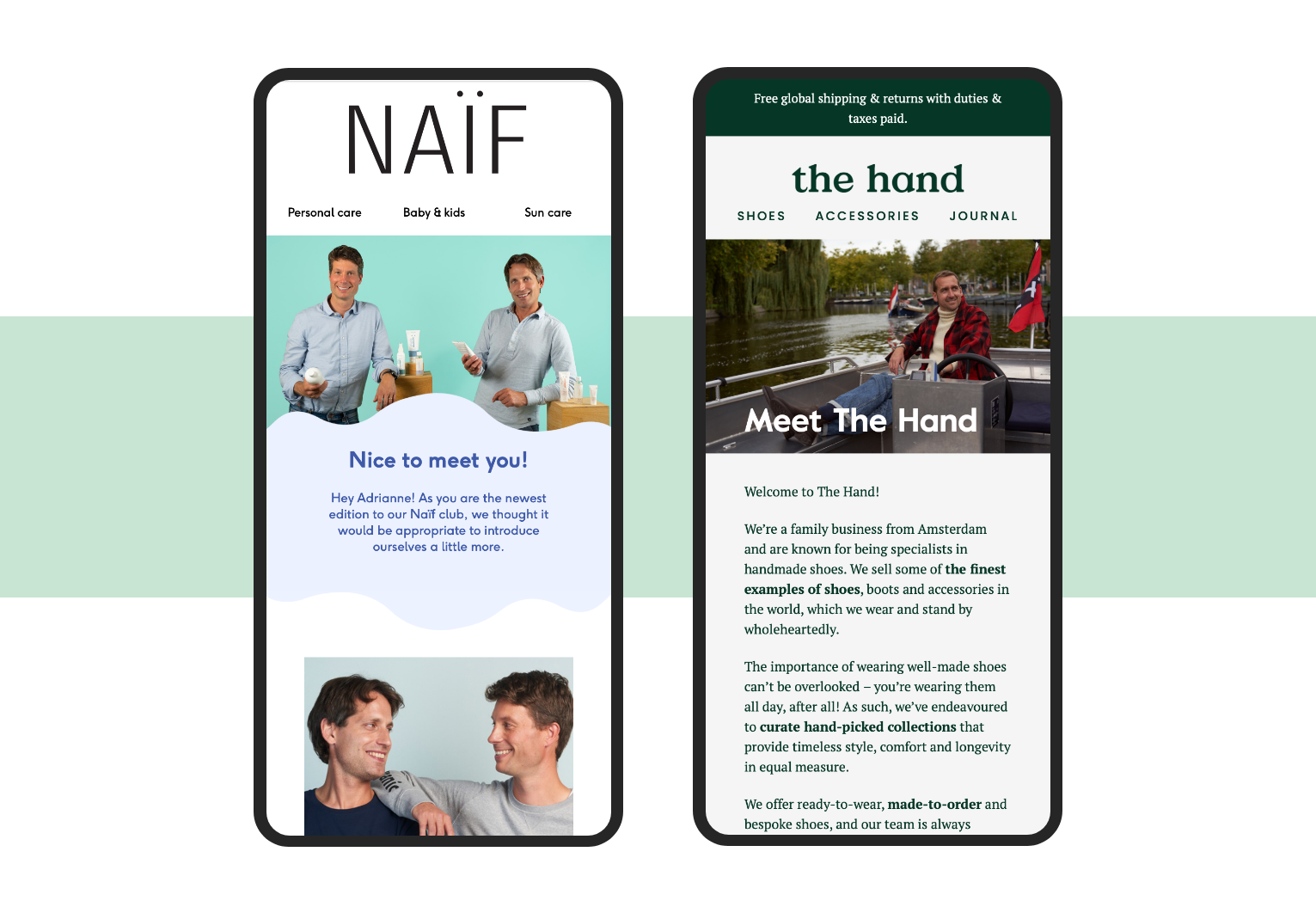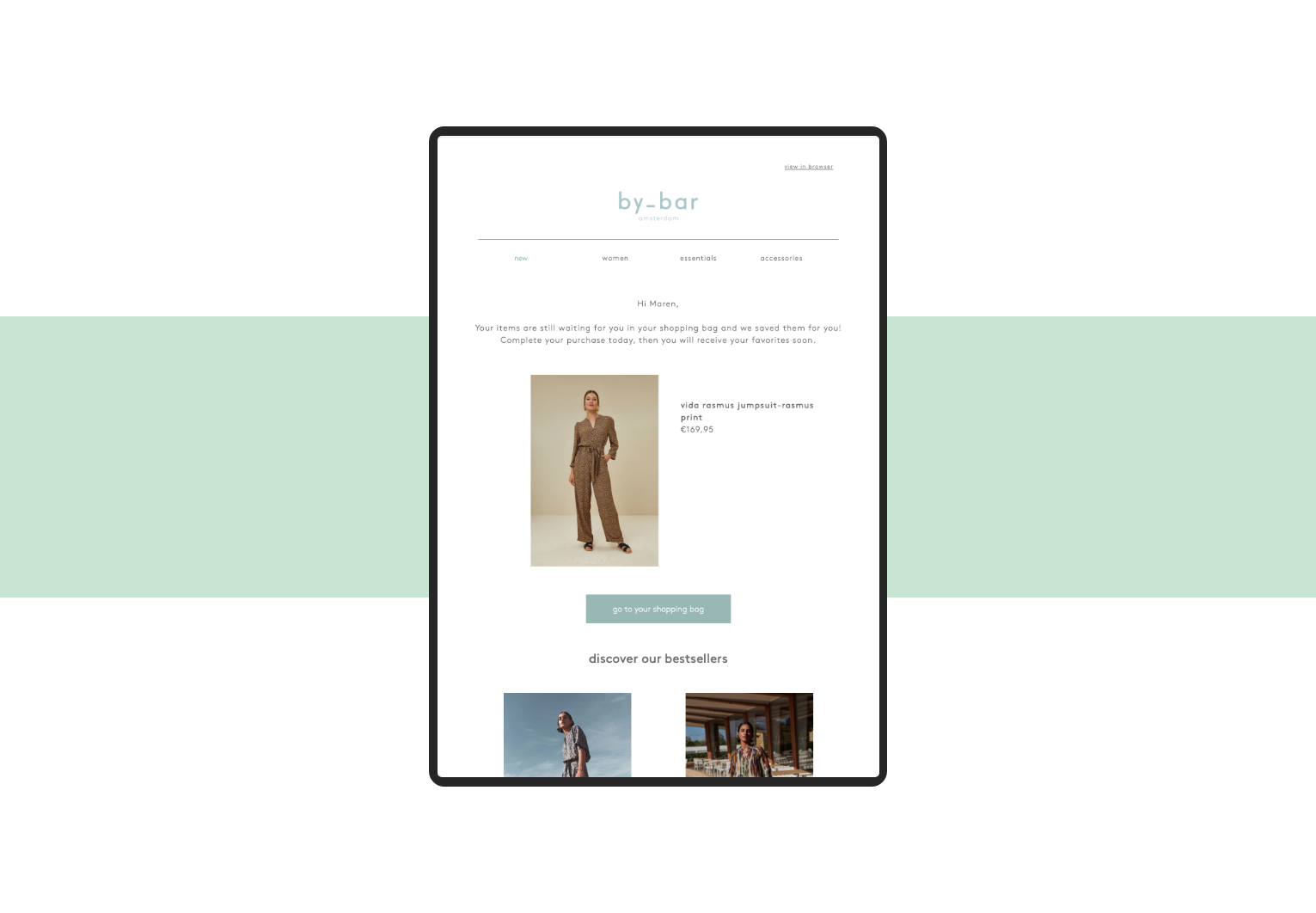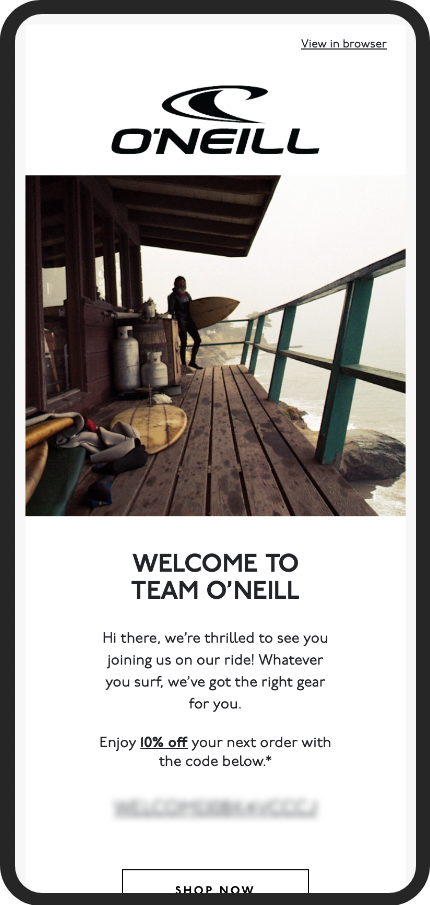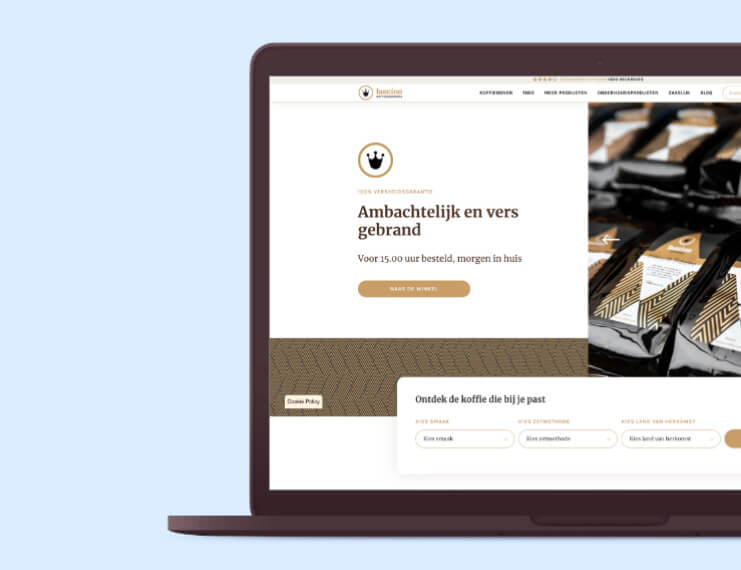1. Welcome series
A welcome series is a couple of emails you can send to anyone who subscribed to your newsletter, with the goal of turning them into customers. Welcome emails typically have a much higher open-rate than other marketing emails, so be sure to make good use of it!
What is remarkable about welcome mails is how actively interested the subscriber is at this initial stage. Make sure you capitalize on this by properly introducing your brand and getting to know the new subscriber’s preferences. This will show in your results: showing well-timed, relevant information pays off in the long run.
At Code we usually go for a series of four or five emails, as in the welcome flow we designed for O'Neill. The average result for a welcome series in which we offer a gift is a 50-70% open rate and a 15-20% placed-order-rate, but O'Neill realized a whopping 72% open rate and a 24,5% placed-order-rate for mail 1.

2. Abandoned checkout recovery
With this email you reach out to customers who were in the process of actually placing an order, but for some reason failed to complete it. Mind you: an Abandoned checkout recovery is not the same as an Abandoned cart recovery! A visitor abandoning the actual checkout process has a different level of interest than someone who put some products in their cart and never even made it to the checkout. With people leaving at the checkout, there is a much higher chance that they really wanted to buy the product, but some- thing put them off - and you might want to figure out what that was.
On average abandoned checkout emails help our clients to recover around 15% of what would have otherwise been lost revenue.

3. Abandoned cart recovery
As we said in the previous section: shoppers abandoning their cart aren’t as committed to the products in that cart as the people who started the checkout process. Hence: don’t spam them. A single invitation to check out these products is enough, we think. Anything more is too pushy. Depending on the type of products in your average cart, you can recover 5% of abandoned carts through this email.

4. Birthday
If new subscribers gave you their date of birth in reaction to your welcome series, you should of course do something festive with it! That’s where this email flow comes in. Your first instinct is probably to send them an email on their actual birthday - but that might not be the best idea. If you sell coffee, wine or party dresses, for instance, the customer will need your product in advance, so they can use it on the day itself. Hence, consider sending the email a week before to give them time to receive your gift.
On average we achieve a 8-15% placed-order rate with this one, depending on if you offer customers a discount or not.

5. Back in stock reminder
When a product is sold out and you expect new stock coming in soon, it is a good idea to offer people a back-in-stock reminder when they can order again. On average, these reminders have a 10-15% placed order rate.
Customers can subscribe to a reminder by clicking a button on the product page. When they enter their email address in the pop-up screen, make sure there is an opt-in for your newsletter too by adding a checkbox. Also check if this flow overlaps with other email flows the subscriber might be in already, such as the welcome series.
An added benefit of this flow is that you can predict demand for a product, which helps you to determine how much to buy.

Email Marketing with Klaviyo and Code
Now you know which email flows are a must-have for your e-commerce business. It's time to choose Klaviyo or Mailchimp and set them up!
As your Klaviyo partner, we can realize 20 to 50% revenue through email marketing.
We would love to have a sparring session about your email marketing. We can tell you all about cost, the kind of results that are feasible for your business, and how we propose to execute any specific requests you have.
Rather do it yourself? Download our e-book for some guidance and inspiration.
.webp?width=1200&name=Klaviyo%20Code%20(1).webp)





